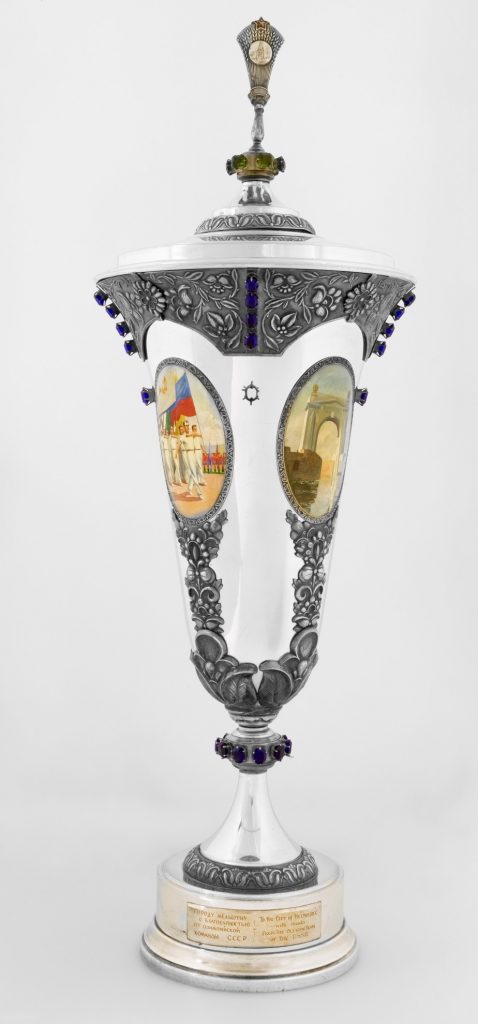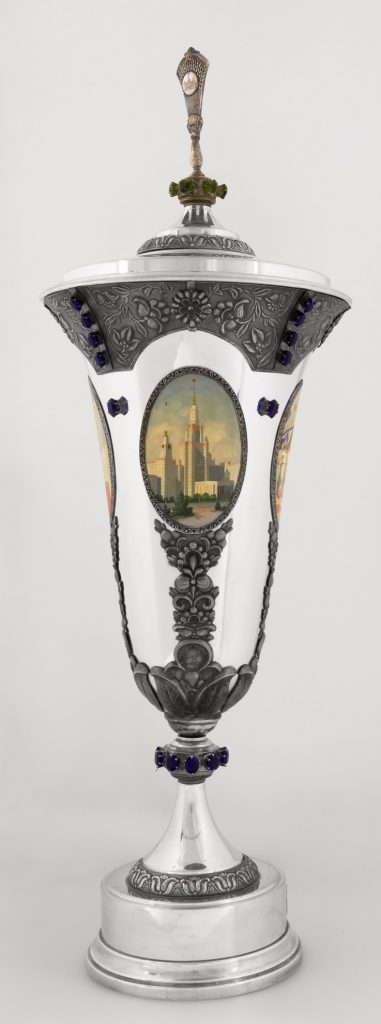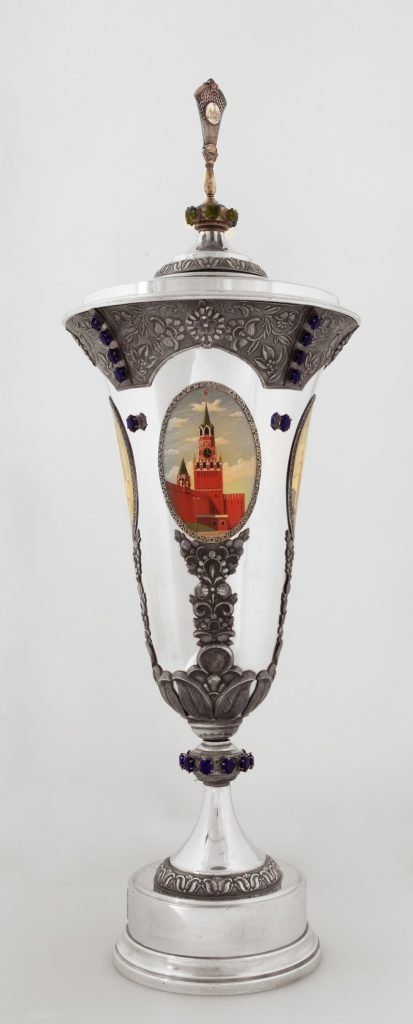1956 Olympic Games, Russia, Friendship Cup, USSR
Summary
Silver metal trophy with lid. Decorated with blue and green cut glass, hand painted and with enamelled inserts.
With more than a touch of the Fabergé egg about it, the Friendship Cup was presented by the USSR team to the City of Melbourne at the close of the 1956 Olympic Games. It was a generous gift – there is nothing like it in the collection from other teams – but it now stands for something else, serving as a reminder of a distinctly ugly moment in time when fear and loathing for the burgeoning Soviet empire reached new heights. It is an artefact of the Cold War.
Three weeks before the opening ceremony for the Games, on 22 November 1956, Hungary had tried to throw off its yoke as a postwar Soviet satellite state. The Kremlin responded with force – airstrikes, artillery bombardment and tank actions – and successfully regained control. On 6 December, the Hungary and USSR water polo teams were due to meet in the Olympic pool. This was more than an Olympic event. Tensions were stratospherically high. Many in the crowd were recent Hungarian refugees to Australia and had the backing of born and bred Aussies. From the beginning the match was dirty. Punches were thrown by both sides and referees struggled to maintain control. Two minutes before the final bell, a Russian player landed a heavy blow on the face of a Hungarian, resulting in a bloody gash. 'Blood in the Water' was the headline commonly chosen for reports on the match in newspapers around the world, and indeed that is how it is remembered to this day.
In a reversal of the political situation, Hungary won the match 4-0. Clearly, sport does not always follow life and a Friendship Cup does not always symbolise...



